+Search query
-Structure paper
| Title | Structure of photosystem II reveals conformational flexibility of stacked and unstacked supercomplexes. |
|---|---|
| Journal, issue, pages | Elife, Vol. 12, Year 2023 |
| Publish date | Feb 17, 2023 |
 Authors Authors | Ido Caspy / Maria Fadeeva / Yuval Mazor / Nathan Nelson /   |
| PubMed Abstract | Photosystem II (PSII) generates an oxidant whose redox potential is high enough to enable water oxidation , a substrate so abundant that it assures a practically unlimited electron source for life on ...Photosystem II (PSII) generates an oxidant whose redox potential is high enough to enable water oxidation , a substrate so abundant that it assures a practically unlimited electron source for life on earth . Our knowledge on the mechanism of water photooxidation was greatly advanced by high-resolution structures of prokaryotic PSII . Here, we show high-resolution cryogenic electron microscopy (cryo-EM) structures of eukaryotic PSII from the green alga at two distinct conformations. The conformers are also present in stacked PSII, exhibiting flexibility that may be relevant to the grana formation in chloroplasts of the green lineage. CP29, one of PSII associated light-harvesting antennae, plays a major role in distinguishing the two conformations of the supercomplex. We also show that the stacked PSII dimer, a form suggested to support the organisation of thylakoid membranes , can appear in many different orientations providing a flexible stacking mechanism for the arrangement of grana stacks in thylakoids. Our findings provide a structural basis for the heterogenous nature of the eukaryotic PSII on multiple levels. |
 External links External links |  Elife / Elife /  PubMed:36799903 / PubMed:36799903 /  PubMed Central PubMed Central |
| Methods | EM (single particle) |
| Resolution | 2.43 - 4.0 Å |
| Structure data | EMDB-13429, PDB-7pi0: EMDB-13430, PDB-7pi5: EMDB-13444, PDB-7pin: EMDB-13455, PDB-7piw: EMDB-13548, PDB-7pnk: |
| Chemicals | 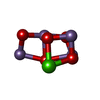 ChemComp-OEX:  ChemComp-FE2:  ChemComp-CL:  ChemComp-CLA:  ChemComp-PHO:  ChemComp-BCR:  ChemComp-NA:  ChemComp-SQD: 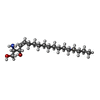 ChemComp-SPH:  ChemComp-LMG: 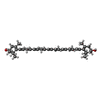 ChemComp-C7Z:  ChemComp-DGD: 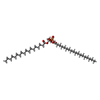 ChemComp-3PH:  ChemComp-DGA:  ChemComp-LHG: 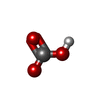 ChemComp-BCT: 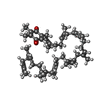 ChemComp-PL9:  ChemComp-HEM:  ChemComp-RRX: 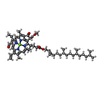 ChemComp-CHL: 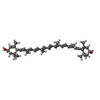 ChemComp-LUT: 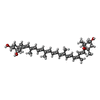 ChemComp-NEX: 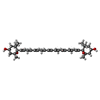 ChemComp-XAT: 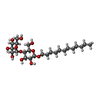 ChemComp-LMT: 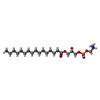 ChemComp-LPX: 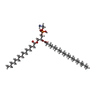 ChemComp-PTY:  ChemComp-HOH:  ChemComp-GOL:  ChemComp-LMK: 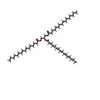 ChemComp-4RF:  ChemComp-ERG: |
| Source |
|
 Keywords Keywords | PHOTOSYNTHESIS / green algae / photosystem II / thylakoid / oxygen evolving complex / cryo-EM / stacking |
 Movie
Movie Controller
Controller Structure viewers
Structure viewers About Yorodumi Papers
About Yorodumi Papers




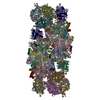

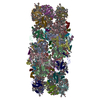

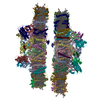

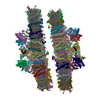

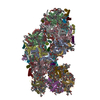
 dunaliella salina (plant)
dunaliella salina (plant)